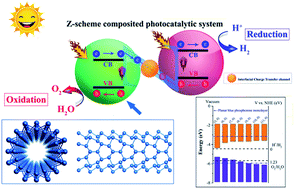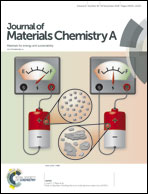Potential of one-dimensional blue phosphorene nanotubes as a water splitting photocatalyst†
Abstract
Semiconductor photocatalysis via photogenerated electrons and holes can split water into H2 and O2, which is a promising way to utilize solar energy. However, the inefficient generation of oxygen severely restricts the catalytic efficiency for overall water splitting. Thus, it is necessary to find new photocatalysts for the oxygen evolution reaction (OER). In the present study, the electronic structure and related properties of one-dimensional blue phosphorene nanotubes (BPNTs) are systematically investigated using first-principle calculations to explore their photocatalytic activities. Our results demonstrate that the strain energy of BPNTs with a large diameter (larger than 8 Å) is nearly the same as that of carbon nanotubes, indicating that these BPNTs are stable. Due to their perfect band gaps and band energies for photocatalytic activity, BPNTs have potential for application in visible light photocatalysis for overall water splitting. More significantly, p-type zigzag BPNTs with good photooxidation capabilities, low electron–hole recombination, and high hole mobility (1729.53 cm2 V−1 s−1) and photo-response coefficient (20a02 per photon) are promising candidates as photocatalytic materials for OER. Besides, the band gap of BPNTs can be tuned monotonically by reasonable strain. We further report advanced strategies for designing and improving potentially efficient photocatalysts for overall water splitting.



 Please wait while we load your content...
Please wait while we load your content...